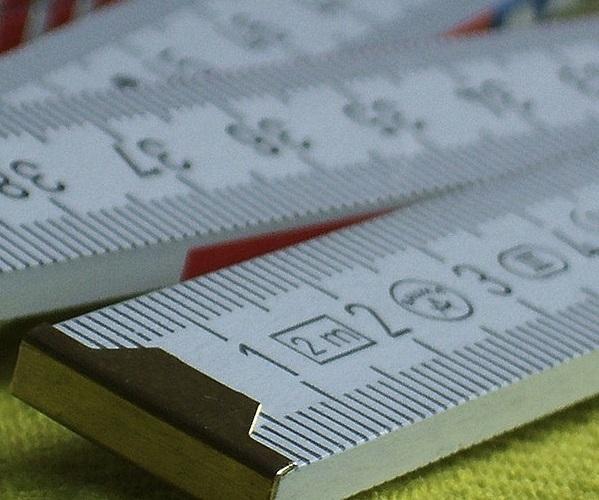Accurately measuring the world around us is a critical part of modern life. From tracking scientific data to regulating trade, units of measurement provide a common framework for quantifying and comparing different phenomena. This guide explores the fascinating world of units of measurement, delving into their history, types, systems, and practical applications across various fields. Read on to gain a comprehensive understanding of this vital, but often overlooked, foundation of society.
Introduction to Units of Measurement
Measurement allows us to move beyond vague approximations and describe the world around us in objective, precise terms. Early civilizations laid the groundwork for standardized units to facilitate trade and taxation. Over centuries, different systems emerged across cultures, with units defined by the environment and needs of each society. It wasn’t until the 18th century that efforts to consolidate myriad regional units led to the metric system – now known as the International System of Units (SI).
The development of unified measurement systems enabled advances in science and industry, from mapping latitude and longitude to building factories. Today, we encounter units of measurement daily, from weather forecasts and product labels to vehicle speed limits. Measurement provides a common language for commerce, governance, and education. Standardized units allow scientists worldwide to share research and findings based on the same benchmarks. As human understanding continues to progress, well-defined units of measurement form the bedrock of quantification and comparison across all fields.
Systems of Units
Various civilizations developed measurements based on accessible reference points, such as the length of a finger or the king’s foot. This resulted in many localized systems of units. It wasn’t until the 19th century that efforts to standardize units of measurement globally gained traction. Let’s look at some of the key systems of units used today.
International System of Units (SI)
The International System of Units, known as SI for its French name Système International (d’unités), is the modern metric system. Established in 1960, SI built on the older metric system to provide an international standard recognized globally. It consists of 7 base units, like the meter for length and kilogram for mass, which define all other SI units.
Imperial System
The imperial system comprises units historically used in Britain and its colonies. It includes units of length like miles and yards, units of weight such as pounds and ounces, and volumes like pints and gallons. The imperial system remained entrenched in Britain until it adopted the metric system in the 1960s.
United States Customary System
The United States uses its own system of units derived from British imperial units used in the 18th century. For example, while both systems employ inches and pounds, a US gallon differs from an imperial gallon. Over time, the US customary system adopted certain metric units, like centimeters and liters, creating a hybrid system. However, metric units are dominant in science, medicine, and industry in America.
Base Units and Derived Units
The International System of Units consists of 7 base units that are universal, independent dimensions for defining all other units. Derived units are formed by combining these base units according to algebraic relations. This provides an interrelated system for measuring myriad aspects of the physical world.
Base Units
The 7 SI base units are:
- Meter (m) for length
- Kilogram (kg) for mass
- Second (s) for time
- Ampere (A) for electric current
- Kelvin (K) for temperature
- Mole (mol) for amount of substance
- Candela (cd) for luminous intensity
These base units provide a foundation for the entire system by representing different fundamental properties. All other SI units stem from various combinations of the base units.
Derived Units
Derived units are created by multiplying, dividing or raising base units to powers according to their algebraic relations. Some derived units have special names and symbols, like hertz (Hz) for frequency, newtons (N) for force and joules (J) for energy. There are currently 22 named derived units in the SI system, with many more possible by manipulating the base units. For example, velocity is derived from m/s and acceleration is derived from m/s2. Derived units streamline more complex measurement relationships to enable simpler and more exact quantification.
Units of Length, Mass and Time
Let’s look at some specific examples of units commonly used to measure length, mass and time across different measurement systems:
Length
Metric system: Meter (m), centimeter (cm), millimeter (mm), kilometer (km)
Imperial system: Inch (in), foot (ft), yard (yd), mile (mi)
US customary system: Inch (in), foot (ft), yard (yd), mile (mi)
Mass
Metric system: Gram (g), kilogram (kg)
Imperial system: Ounce (oz), pound (lb), stone (st)
US customary system: Ounce (oz), pound (lb), ton (short ton)
Time
Metric system: Second (s), minute, hour, day, week, year
Imperial system: Second (s), minute, hour, day, week, year
US customary system: Second (s), minute, hour, day, week, year
The standardized base unit provides a reference point to define and relate other units, allowing conversion between units within each system. Note that certain units, like seconds, minutes and years are consistent across systems, enabling time measurements to be universally understood.
Units of Volume, Temperature and Other Quantities
In addition to length, mass and time, we also need standardized units to measure other important quantities like volume, temperature and energy. Here are some key units used for these purposes:
Volume
Metric system: Liter (L), milliliter (mL)
Imperial system: Gallon (gal), pint (pt), fluid ounce (fl oz)
US customary system: Gallon (gal), pint (pt), fluid ounce (fl oz), cubic feet (cu ft)
Temperature
Metric system: Celsius (°C), kelvin (K)
Imperial system: Fahrenheit (°F), Celsius (°C)
US customary system: Fahrenheit (°F), Celsius (°C)
Other Quantities
Area – sq meter (m2), hectare (hectare), sq feet (ft2)
Speed – meters/second (m/s), miles/hour (mph), knots (kn)
Energy – joule (J), kilowatt-hour (kWh), British thermal unit (BTU)
As we can see, different unit systems employ their own units suited to needs and contexts. For example, Fahrenheit is more commonly used in everyday applications in the US, while Celsius predominates in science. Understanding how to convert between the units of different systems broadens their applicability.
Conversions Between Units
With multiple systems of units existing in parallel, converting between units is often necessary for calculations and measurements. Unit conversions take advantage of the mathematical relationships between units to transform a quantity measurement from one system to another. Let’s look at some examples:
Length
1 mile = 1.609 km
1 in = 2.54 cm
To convert 2 miles to km: 2 miles x 1.609 km/1 mile = 3.218 km
Mass
1 lb = 0.454 kg
1 oz = 28.35 g
To convert 5 lbs to kg: 5 lbs x 0.454 kg/1 lb = 2.27 kg
Volume
1 gal = 3.785 L
1 fl oz = 29.57 mL
To convert 15 gallons to liters: 15 gallons x 3.785 L/1 gal = 56.78 L
Temperature
C = (F – 32) x (5/9)
To convert 100°F to °C: (100°F – 32) x (5/9) = 37.8°C
Unit conversions allow us to understand measurements across different systems. By exploiting the mathematical relationships between units, we can seamlessly convert measurements for applications involving multiple systems. Unit conversions underpin international collaboration in trade, science and other fields.
Real-Life Applications of Units of Measurement
Now that we’ve explored the fundamentals of units and systems of measurement, let’s look at how they apply to everyday life and work. Measurement enables complex aspects of the world to be efficiently managed and advanced.
Science and Research
Standard units allow researchers worldwide to accurately measure phenomena and share consistent, meaningful results. From nanometers measuring atomic structures to astronomical units spanning space, consistent standards underpin scientific collaboration and knowledge.
Transportation
Units create safety and efficiency in transportation through speed limits, fuel economy ratings, and navigation. Key applications involve measuring distance traveled, fuel consumption, and acceleration.
Commerce and Trade
Units of measurement regulate commerce domestically and internationally. Sales, purchasing, shipping and taxes all rely on standardized units to fairly and accurately assess the value of transactions.
Environment Monitoring
Pollution, emissions, resource use, and ecological impacts relies on standardized units. Measurements inform policymaking and compliance across issues like industrial emissions and water use.
Engineering and Construction
From architectural plans to machined parts, standardized units allow precise translation of specifications into physical structures and components. Infrastructure like roads and buildings rely on commonly understood measurement units.
Medicine and Health
Accurately prescribing medication, assessing radiation doses, and analyzing health metrics depends on unified systems of measurement. Consistent units enable the safe and effective delivery of health services.
Everyday Life
In day to day life, we tell time, follow recipes, navigate distances, and size up objects using standardized units, even if we don’t always realize it. Shared systems of measurement are ingrained into how we quantify and make sense of the world.
From trade and science to the rhythms of daily life, units of measurement provide a common language to understand and interact with our complex world. Though often overlooked, consistent systems for assigning numbers to observations are a foundation of the modern global community. As societies continue advancing into the future, universally accepted units will serve as the bedrock for comprehending an increasingly complex world.
Sources:
- Wikipedia – Unit of Measurement: Unit of Measurement
- Wikipedia – History of Measurement: History of Measurement
- Wikipedia – System of Units of Measurement: System of Units of Measurement
- Science Clarified – Standardized Units of Measure: Standardized Units of Measure
- Cuemath – Units of Measurement: Units of Measurement
- Wikipedia – History of the Metric System: History of the Metric System
- BC Open Textbooks – Units of Measurement: Units of Measurement
- Toppr – Units and Measurement – Real Life Applications: Real Life Applications
- Physics LibreTexts – Units and Measurement (Summary): Units and Measurement (Summary)
- Vitrek – History of Measurements: History of Measurements
- Wyoming Department of Transportation – Units of Measure: Units of Measure
- Study.com – Measurement Units & Applications: Measurement Units & Applications
- Smartick – Review of all Units of Measurements: Review of all Units of Measurements
- Keyence – History of Length Units: History of Length Units










